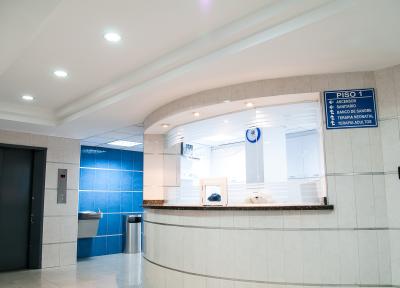
Viral Hemorrhagic Fever Preparedness and Response
Recommendations for frontline facilities
The U.S. Centers for Disease Control and Prevention (CDC) recommends all frontline healthcare facilities prepare for patients with Ebola or other viral hemorrhagic fevers (VHFs) by:
- Training staff to quickly identify, isolate, and manage potentially infected patients
- Developing systems to safely manage waste disposal, cleaning, and disinfection
- Notifying state and local public health officials according to protocols
Frontline facilities include acute care hospitals, urgent care clinics, critical access hospitals, and other emergency care settings, but not primary care offices or other non-emergent ambulatory care settings.
Preparing facilities for Ebola and other VHF Outbreaks
Personal protective equipment
The viral hemorrhagic fevers spread through contact with bodily fluids — so proper use of personal protective equipment (PPE) is especially important. In the case of Ebola, the CDC recommends frontline care facilities have enough PPE on hand for at least 12-24 hours of continuous care.
Facility preparedness
In addition to sufficient PPE practices, an effective VHF response also includes:
- High-level containment care (HLCC) units – physically isolated areas that use enhanced engineering controls to contain the viruses while staff provide all aspects of clinical care to potentially infected patients
- Zones for donning, doffing, and storage of PPE – including appropriate showering facilities for staff members exiting sensitive care units
- Designated areas of risk to reduce potential contamination and guide healthcare worker flow:
- Red/Hot Zone for patient rooms, laboratory
- Yellow/Warm Zone for anteroom, decontamination area, waste processing, doffing
- Green/Cold Zone for nurse station, clean supply room, staff egress changing area
- Telehealth strategies – allow healthcare workers to communicate with and assess patients remotely to limit direct contact
Responding to a Potential VHF Infection
The California state and LA County health authorities follow the "identify, isolate, and inform" model of care recommended by the CDC for patients suspected of infection with viral hemorrhagic fever.
Screening
Because early symptoms of viral hemorrhagic fevers often mirror those of other infectious diseases, getting a detailed travel and exposure history from a patient is critical. The California Department of Public Health (CDPH) offers a screening form to help assess a patient's risk of infection.
Reporting
If a patient's screening indicates they might be infected with Ebola or another viral hemorrhagic fever, healthcare providers should isolate the patient and notify their local healthcare department immediately. In LA County, healthcare providers should contact the Department of Public Health Acute Communicable Disease Control Program:
8 a.m.–5 p.m. Monday–Friday at 213-240-7941 or
after hours at 213-974-1234.
When receiving these calls, local heath departments will provide immediate infection control guidance for the suspected case being reported, and then immediately notify the California Department of Public Health.
Patient Transport
The CDPH will provide consultation to help determine if a patient needs further evaluation or transport to a designated assessment and treatment facility. In cases of low risk of VHF infection, they may recommend the patient remain at the frontline facility while testing is conducted, to help minimize exposure.
Waste Management
Because of the nature of VHF symptoms, an HLCC setting can reportedly generate over 1,000 pounds of waste per patient. This includes solid and liquid patient waste, patient linens, healthcare worker PPE and linens, contaminated medical devices, and other general medical waste associated with VHF contamination, which are designated as Category A Infectious Substances. A comprehensive waste management plan and staff training are an important part of VHF infection control and prevention.

